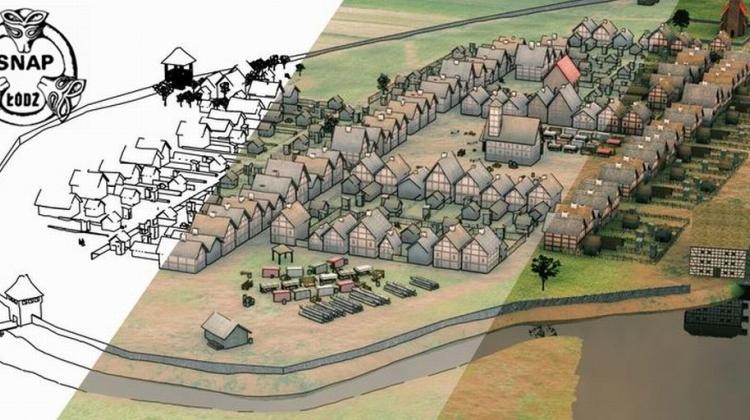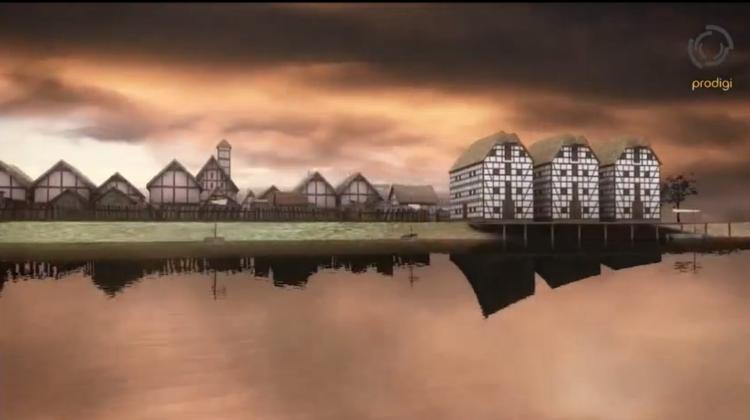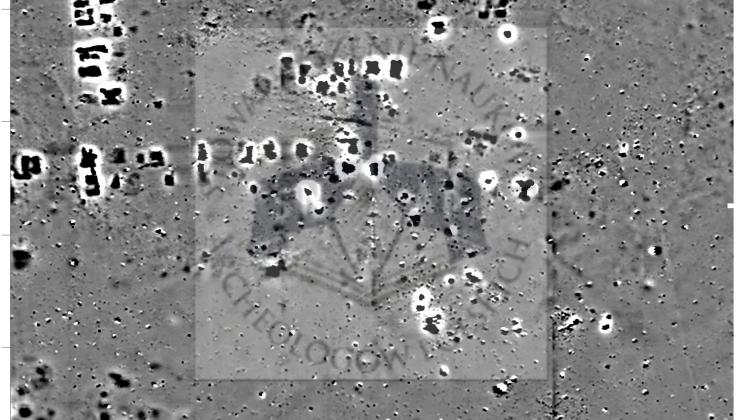Archaeologists: The market square of medieval Nieszawa was more developed than we thought
The market square of 15th century Nieszawa (Kujawsko-Pomorskie province) consisted not only of the town hall and cloth hall, but also other permanent buildings. Until now, archaeologists believed that there were only temporary stalls in the square. New findings are the result of a GPR survey.
Traces of medieval Nieszawa - a town that existed only for a few dozen years in the 15th century, are located in the arable fields in the area of Podgórze near Toruń. Archaeologists have been studying them since 2012 with many methods that do not require excavation.
"We have been wondering for a few years whether the town market was more built-up, because we had a lot of data that pointed to that, including the results of measurements of magnetic susceptibility of soil" - said the Nieszawa research project leader, archaeologist and non-invasive research expert, Piotr Wroniecki. He carried out his research as part of the project of the Łódź branch of the Polish Archaeological Association.
Last year`s research confirmed the suspicions of archaeologists. "GPR gave us a three-dimensional insight into what was hidden underground - we had no such opportunity before. Now we have proof that there are remains of basements in the market area. Thus, the market centre was in fact occupied not by ordinary stalls, but by numerous permanent structures" - says Wroniecki. Scientists previously believed that the town hall and cloth hall were the only buildings in the middle of the market square.
Archaeologists are not able to accurately reconstruct the houses that used to stand in this place. The cellars were 4 by 4 m. According to Wroniecki, the above-ground parts of the buildings could have been larger and made of wood.
"Regarding the spatial plan of the city, Nieszawa was similar to Warsaw during that period. But because of the fact that the city was abandoned, we can study its 15th century layout. In the case of (today`s - PAP) capital, it is not possible, because over the centuries subsequent houses were built in the place of earlier ones" - says Wroniecki.
So far, using a very wide range of methods that do not require driving a shovel into the ground, including geophysical research, researchers have determined that the market square in Nieszawa was 140 by 140 m. The city hall probably stood at the centre - researchers have located a 10 by 10 m building. There was an adjacent, elongated structure, probably a cloth hall, a building that housed the stalls.
Research in 2018 was co-financed by the Ministry of Culture and National Heritage.
Nieszawa was a Polish trade town inhabited by several thousand people from various parts of the Kingdom and other parts of Europe. It had a regular street layout, a separate trade and production area, and a system of earth and water fortifications. It was an economic competitor for the Teutonic Toruń located on the other side of the Vistula. The two cities had similar areas. For political reasons, after almost 40 years of its existence, the town`s location was moved several dozen kilometres.
PAP - Science in Poland, Szymon Zdziebłowski
szz/ agt/ kap/
tr. RL
Przed dodaniem komentarza prosimy o zapoznanie z Regulaminem forum serwisu Nauka w Polsce.


















